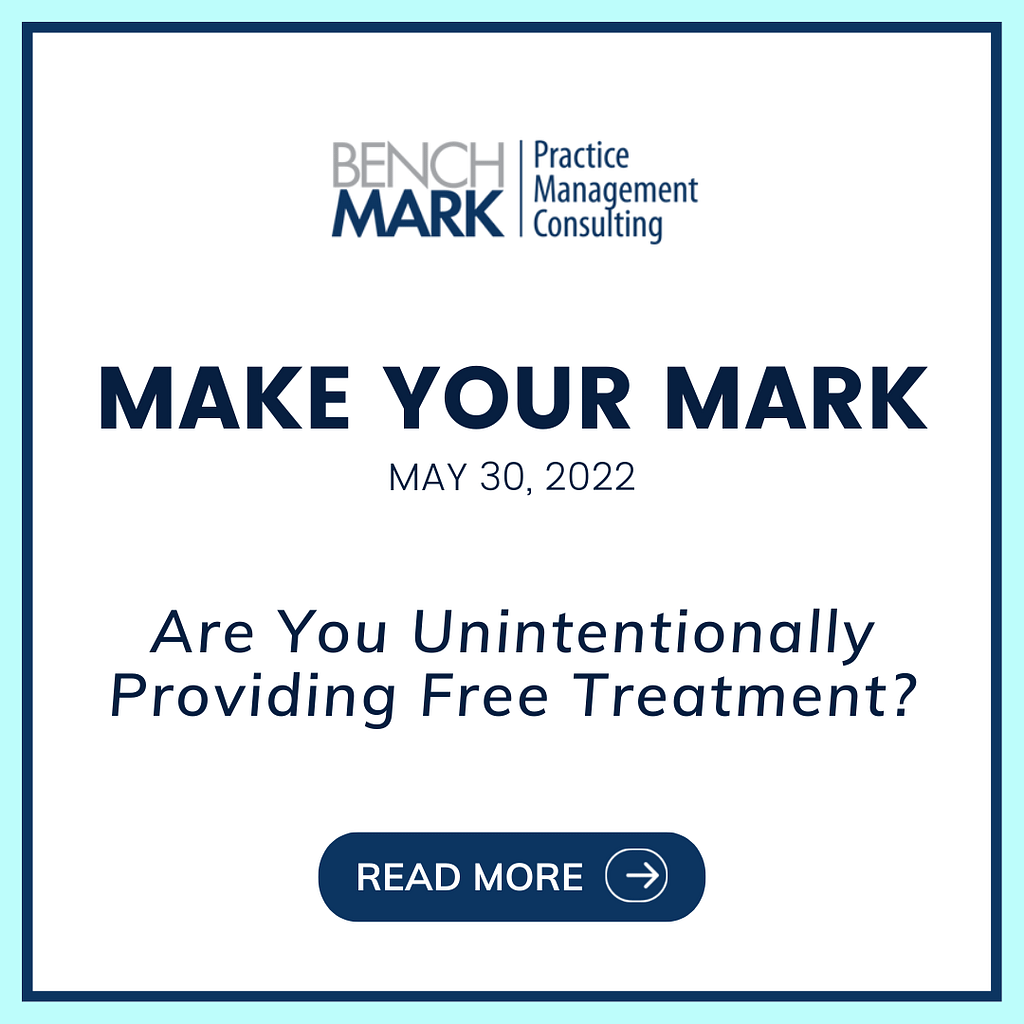You probably don’t realize it, but you may be delivering crowns for free.
If it has taken four hygiene appointments to remind a patient that a crown needs to be completed before they agree to treatment, I’m quite certain that at this point, you are giving away the crown for free. Monetizing the amount of time spent by you, the hygienists and the administrator or treatment coordinator will reveal this shocking conclusion.
Your goal should be that a measured 80% of your treatment is completed after the first time it’s diagnosed. Success requires a full team effort and the following steps:
- At your daily planning meeting, discuss any outstanding diagnosed work or “observes or watches” from the patients’ last appointments. Everyone in the office should know in advance what you are thinking regarding the treatment so that they can support you going forward.
- Intra-oral pictures of the area should be taken and set up on the screen before the patient enters the room. A patient has no idea what you see in their mouths, they only know whether it hurts or not. An intra-oral picture allows them to see their mouths as you do. This is actually the best educational tool you can use when it comes to major restorative dentistry.
- When the dental work has been previously diagnosed, the hygienist can use the time while scaling to help educate the patient about the importance of the procedure. Don’t assume all hygienists are aware of the benefits and consequences of all your procedures. In fact, take the time to educate your entire team to ensure that they can confidently discuss the procedure with your patients.
- From the minute you come in the room, focus on your patient’s comfort so they can focus on you. When discussing treatments, sit them upright, and slide your chair forward so that you’re ‘knee to knee’ with them. The supine position can make many feel uncomfortable and vulnerable while trying to take in facts, and patients should never have to crane their necks at an awkward angle to adjust to you.
- Your assistant also has a part to play in treatment acceptance. Once you step out of the room let the assistant ask if the patient has any questions. Some patients can be shy about asking the dentist directly but will gladly ask the assistant. It should go without saying, but make sure they can support your diagnosis as well.
- “Let’s see what your insurance coverage is.” It’s a phrase that makes me cringe because it sends a very mixed message to the patient. Despite your best intentions, most patients will think they hear “if I don’t have coverage then I don’t need this treatment.” We know you’re just trying to be considerate of your patients finances but you’re minimizing the need for the treatment.
- A simple phone call or email asking patients if they’re going to book a crown is no longer considered sufficient follow up. A team member (usually the administrator) will be delegated the task of following up with patients should be trained to be thoroughly effective with their skills. It’s important that the patients are educated on the benefits of proceeding with treatment as well as the consequences of not proceeding. In addition to being completely knowledgeable regarding available payment options, be sure they’re able to answer and explain any insurance questions the patient may have.
It’s obvious that treatment acceptance is a total team responsibility. You can stop losing money if you aim for treatment acceptance the first time moving forward and focus on implementing these simple yet effective steps together!




